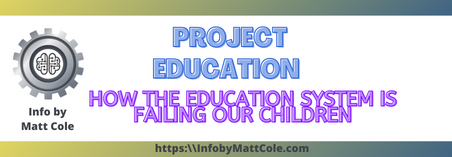Reframing Perspectives for Personal Growth
In the journey of personal growth, the ability to reframe perspectives stands as a potent tool for transformation. Reframing involves altering the way we perceive and interpret situations, challenges, and experiences. It is a cognitive process that empowers individuals to view events from different angles, shifting their mindset and emotions towards more positive and constructive outcomes. By consciously reframing their perspectives, individuals can navigate life’s obstacles with resilience and wisdom, fostering a profound sense of personal growth.
At its core, reframing is about challenging automatic thought patterns and preconceived notions. It urges individuals to question their initial reactions and adopt a more open-minded approach. By doing so, they can recognize alternative viewpoints and reinterpret events in a manner that empowers them rather than disempowers them. For example, reframing a setback as an opportunity for learning and growth can instill a growth-oriented mindset, encouraging individuals to embrace challenges and extract valuable lessons from their experiences.
Moreover, reframing offers the gift of emotional resilience. When faced with adversity, individuals can reframe the situation by identifying positive aspects, seeking silver linings, or envisioning a brighter future. This shift in perspective fosters emotional regulation, enabling them to manage stress, anxiety, and negativity more effectively. As a result, reframing helps individuals build emotional resilience, allowing them to bounce back from setbacks and maintain a sense of balance in their lives.
The practice of reframing is especially relevant in personal development and therapeutic settings. In therapy, cognitive reframing is used to challenge and transform limiting beliefs that may be hindering an individual’s progress. By replacing negative self-talk with positive affirmations, individuals can cultivate a more compassionate and empowering self-perception, facilitating profound personal growth and self-acceptance.
Steps Involving Reframing
Reframing is a cognitive technique used to shift the way we perceive and interpret events, situations, or emotions, transforming our perspective into a more positive and constructive one. This empowering skill allows us to see challenges in a new light, extract valuable lessons from experiences, and cultivate emotional resilience. Here’s a step-by-step guide on how to reframe:
- Recognize Negative Thought Patterns: The first step in reframing is to become aware of negative or unhelpful thought patterns. Pay attention to the language you use internally when facing challenges or setbacks. Look out for phrases like “I can’t,” “I always fail,” or “This is terrible.” Identifying these patterns allows you to understand how they may be influencing your emotions and behaviors.
- Challenge Automatic Reactions: Once you recognize negative thought patterns, challenge them by asking yourself if they are accurate and helpful. Consider alternative perspectives and question the validity of your initial reaction. Are there other ways to interpret the situation? Could there be a silver lining or a learning opportunity within the challenge?
- Find Positive or Constructive Aspects: Look for positive or constructive aspects in the situation. Even in the midst of adversity, there might be opportunities for growth, learning, or self-discovery. Focus on what you have learned, how you have grown, or how this experience might lead to positive changes in your life.
- Use Positive Reframing Language: Replace negative or disempowering language with positive reframing language. For example, instead of saying, “I can’t do this,” reframe it as “I haven’t mastered this yet, but with practice, I will improve.” Use affirmations and positive self-talk to reinforce the new perspective and boost your confidence.
- Consider Others’ Perspectives: Try to see the situation from other people’s viewpoints. This can help you gain insights and empathy, enabling you to understand the broader context and potential reasons behind others’ actions. Considering different perspectives can lead to more understanding and compassionate reactions.
- Visualize the Positive Outcome: Envision a positive outcome or how you want the situation to unfold. Visualization can reinforce a positive outlook and encourage you to take proactive steps towards achieving your goals. Picture yourself successfully overcoming challenges and accomplishing what you set out to do.
- Practice Self-Compassion: Be kind to yourself during the reframing process. Acknowledge that it’s natural to have negative thoughts and emotions, but also recognize your capacity to transform them into more positive and empowering perspectives. Embrace self-compassion and treat yourself with the same understanding and care you would offer to a friend facing a challenge.
Reframing is a skill that improves with practice. As you become more proficient at reframing, you’ll discover that it becomes a natural and empowering way of navigating life’s ups and downs. With time and dedication, reframing can become an essential tool in your personal growth journey, fostering resilience, optimism, and a deeper appreciation for life’s experiences.
In Summary
Reframing perspectives for personal growth is a transformative skill that enables individuals to transcend limitations and embrace life’s challenges with a positive and growth-oriented mindset. By reframing events, thoughts, and emotions, individuals can unlock their potential for emotional resilience, wisdom, and self-empowerment. The ability to reframe is a valuable tool that facilitates not only personal growth but also fosters deeper connections with others and enhances overall well-being. Embracing the power of perception, individuals can embark on a journey of self-discovery and transformation, reaching new heights of personal growth and fulfillment.
 You can check out Matt’s LinkedIn account, Youtube Channel, or Podcast.
You can check out Matt’s LinkedIn account, Youtube Channel, or Podcast.Introducing my new books, ‘The Art of Critical Thinking’ and ‘The Critical Thinking Model’. Both can be read for free with Kindle Unlimited or $2.99 each via Kindle.





